 |
Java Games: Flashcards, matching, concentration, and word search. |
 |
 |
12-13- 4th c Art & Architecture
|
| A | B |
|---|
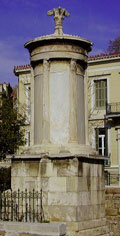 | Lysicrates Monument, 334 BC, Athens, Choregic, first use of exterior Corinthian Columns |
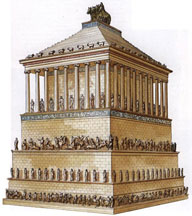 | Mausoleum, Halicarnassus, 340 BC, tomb of King Mausolus, covered in sculpture |
 | Hermes/Dionysus by Praxiteles, Praxitelian S-curve, softer contours than before |
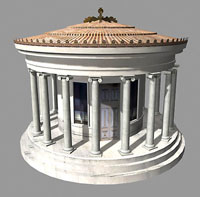 | Philippeion, Olympia, victory monument for Alexander's father, honoring individual, human statues of gold, ivory, Macedonian character |
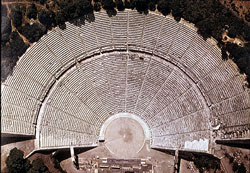 | Best preserved Greek theater, Epidauros, round orchestra, built into hill |
 | Apollo Sauroktonos (lizard slayer) by Praxiteles, Praxitelian s-curve, softer features than before |
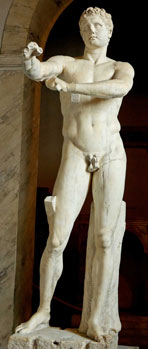 | Apoxyomenos by Lysippos, taller, thinner, smaller head, arms break frontal plane |
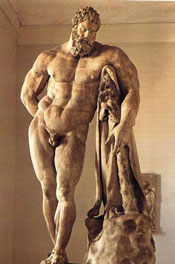 | Herakles by Lysippos, leaning with hand behind back, complex pose, departure from conventional proportions |
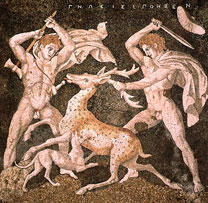 | Stag hunt mosaic from Pella, Alexander's capital, profiles, lighting, shading, suggest contemporary painting |
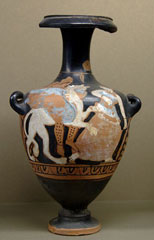 | Kerch style pottery, popular 4th c style; rouletting and stamping, added colors and gold |
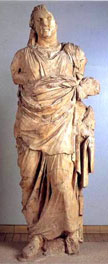 | King Mausolus, from Mausoleum at Halicarnassus |
 | Pergamum Theater, steeply sloping, summit of acropolis |
 | Aphrodite of Knidos by Lysippos, most famous nude female, complicated pose, soft contours contrast with drapery |
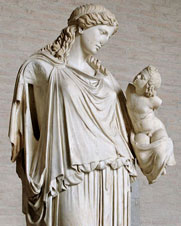 | Eirene (peace) and Ploutos (Wealth) by Kephisodotos, increased naturalism of body and drapery, relationship between figures |
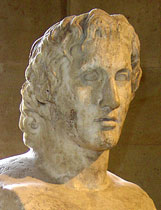 | Alexander by Lysippos, personality, turned head, distinctive hair |
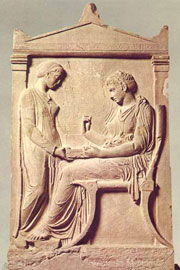 | Grave Stele of Hegeso, 400 BC, interaction of figures, High Classical echoes |
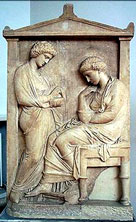 | Grave Stele from Piraeus, 370 BC, NO interaction of figures, Late Classical drapery, features |
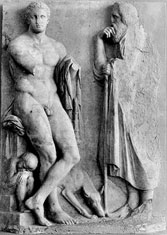 | Relief from Ilissos (Athens River), 340 BC, distant young man, sad old man, youth and dog |
|
 |
 |

|
|
|
Founder and Instructor |
The Lukeion Project |
| Nashville Area, TN |
|
|
|
|
|
| |